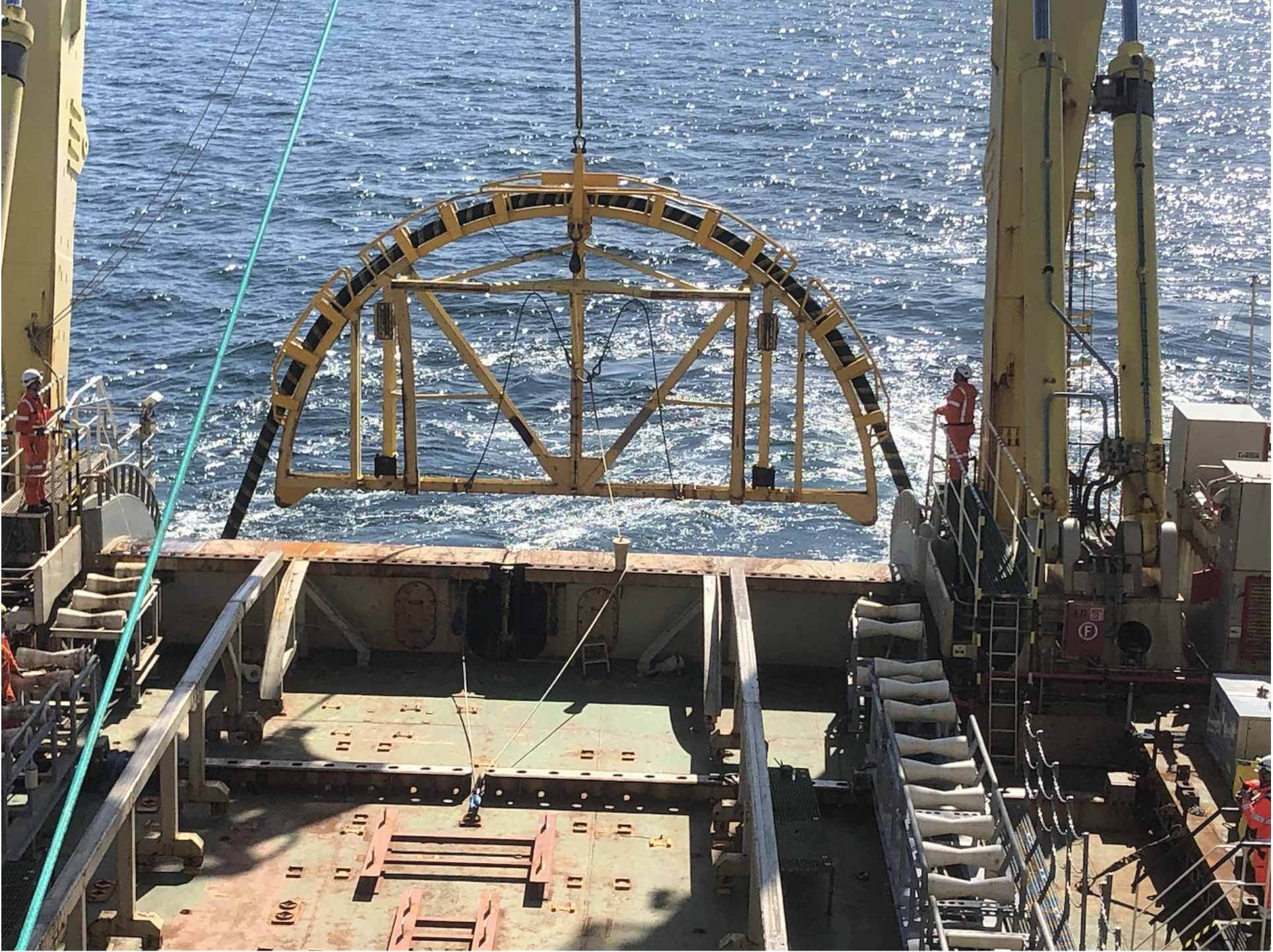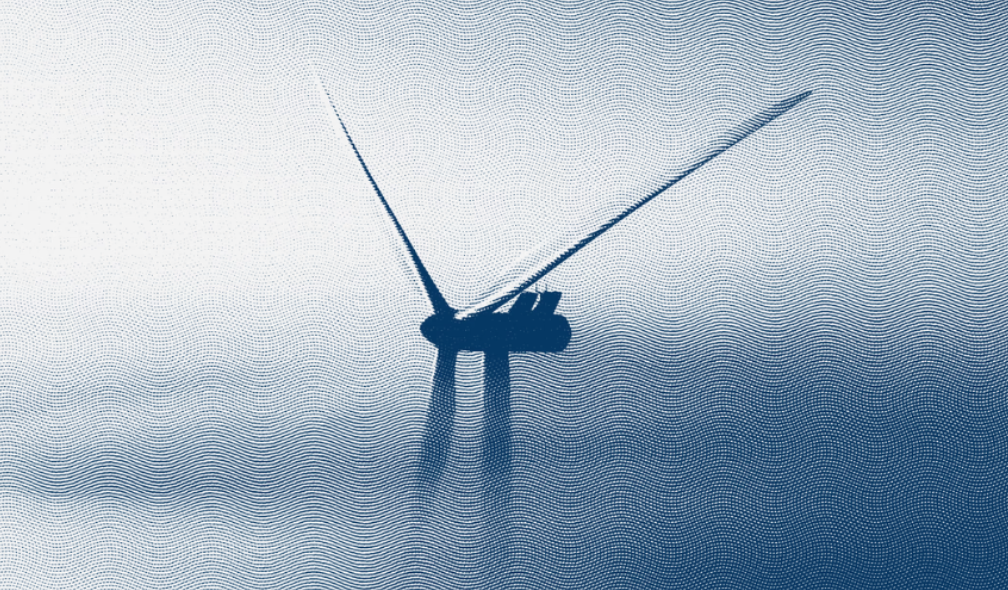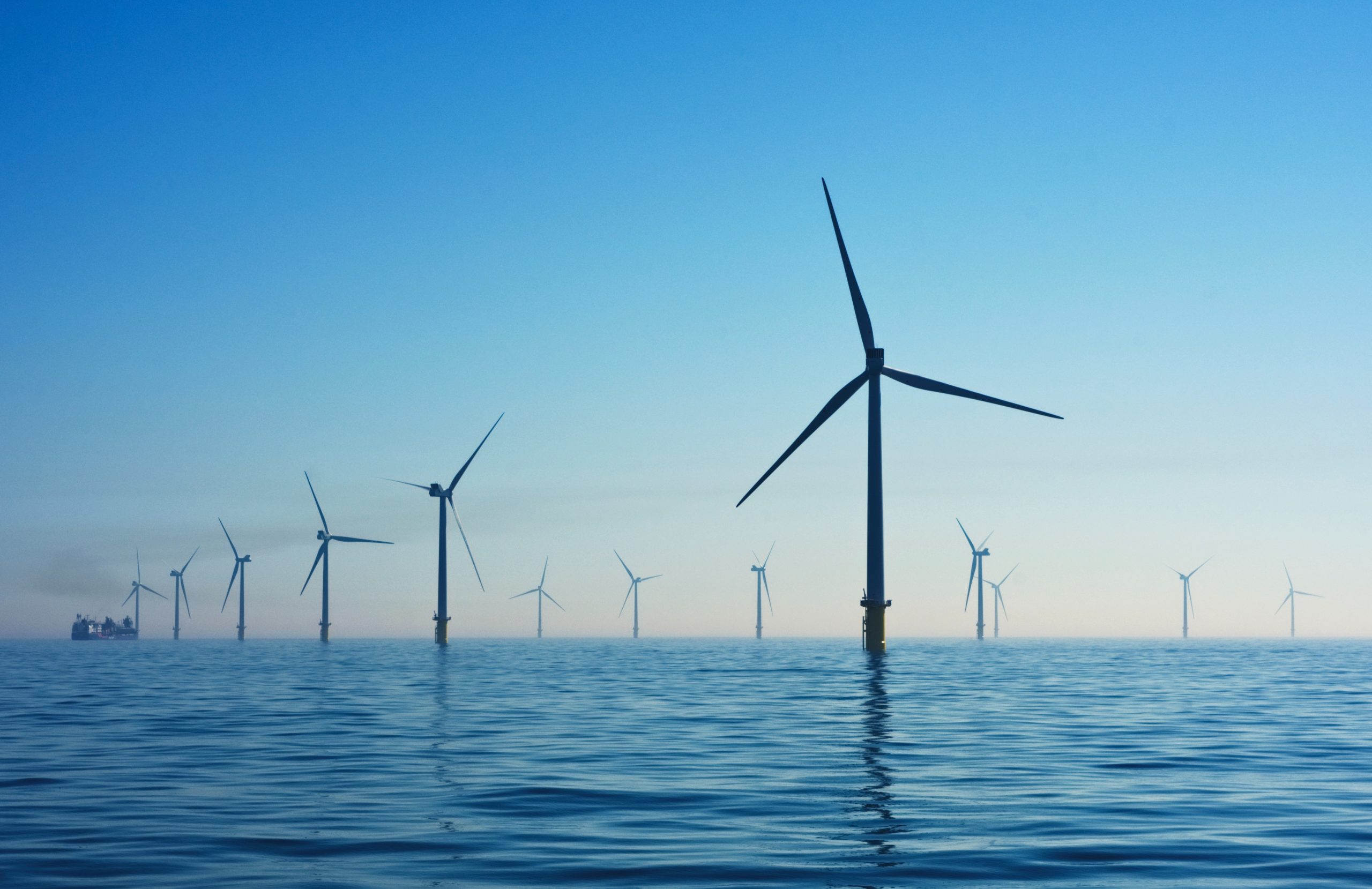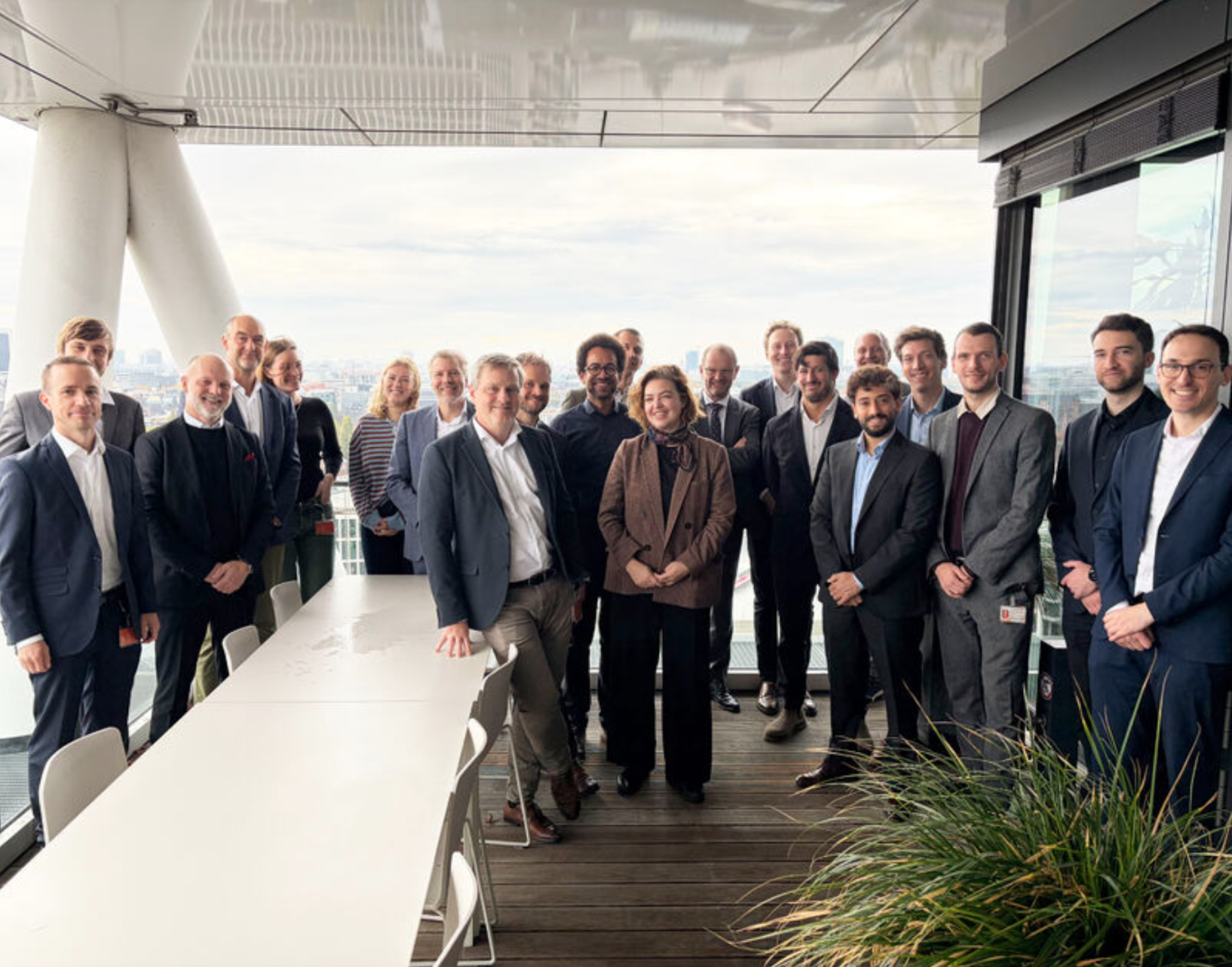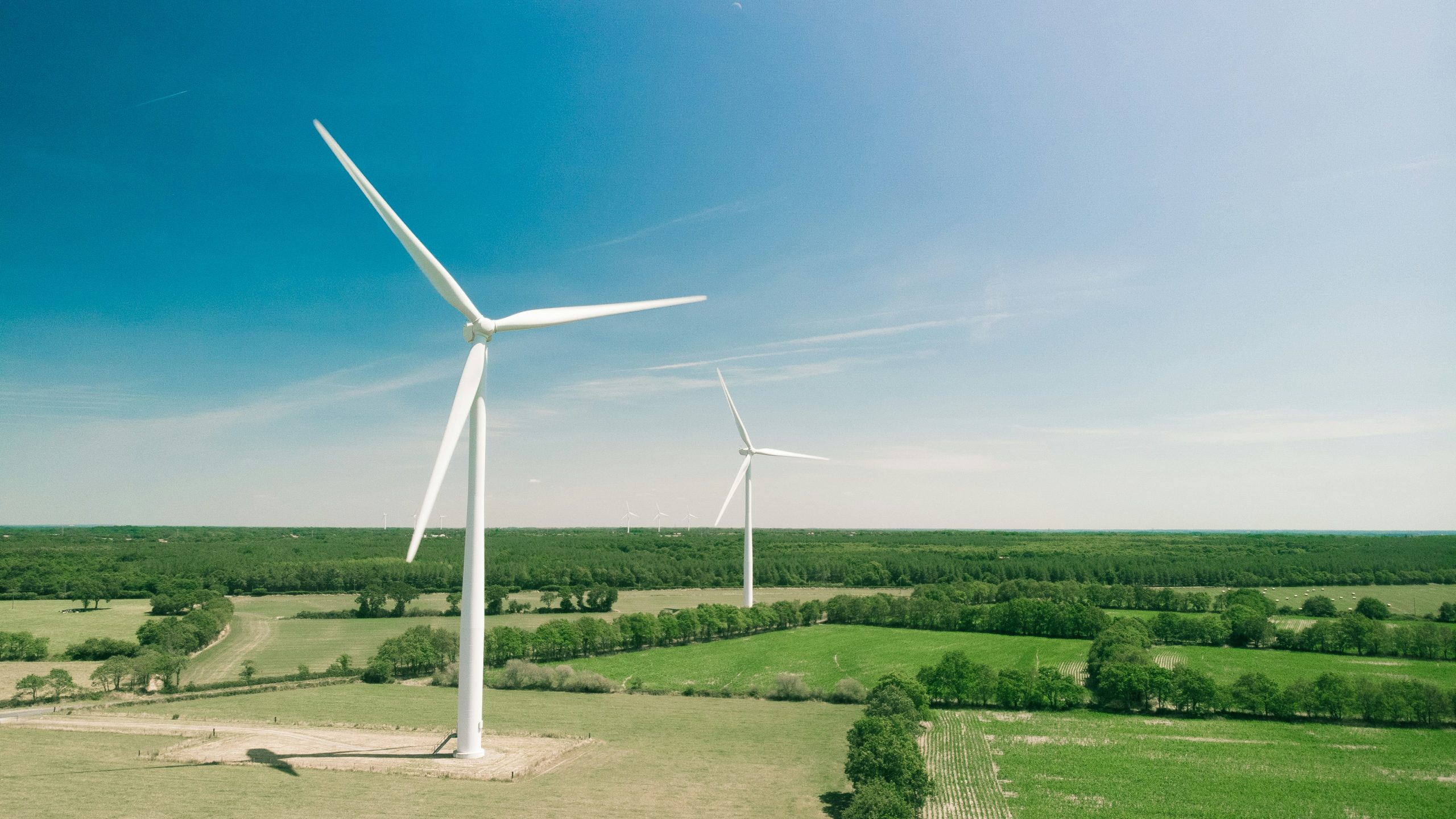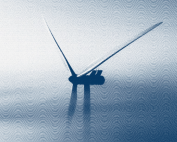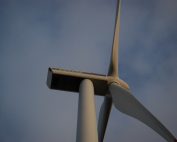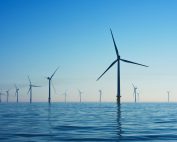The grid connection of the offshore wind farm Baltic Eagle to the German extra-high voltage grid is on the home straight. For this purpose, 50Hertz has successfully pulled two 220 kV submarine cable systems into the Baltic Eagle platform, which had previously been laid on the seabed in a safety area next to the destination of the transformer platform. In February of this year, the transformer platform was already installed at its intended destination northeast of the island of Rügen in the Baltic Eagle wind farm. Currently, the assembly work for the connection to the 50Hertz transmission grid is taking place. This will be followed by extensive testing of the systems.
The cable pull-in is technically very demanding. Up to 72 people were busy offshore on site preparing and carrying out the work for the pull-in. The cable pull-in took about 2.5 days per submarine cable segment. At a water depth of about 40 metres, the submarine cable is pulled into the transformer platform using a winch and another protective tube in the J-tube (cable support), among other things. If the tests are positive, 50Hertz will be ready to connect the Baltic Eagle wind farm, which is currently under construction, to the grid. The electricity generated there will then be fed into the German extra-high voltage grid at the Lubmin substation.
Ostwind 2 is the project to connect the Baltic Sea wind farms Arcadis Ost 1 and Baltic Eagle to the German extra-high voltage grid. To transfer the power from the two wind farms, 50Hertz is building three submarine cable systems that will transmit a total of 750 megawatts (MW) of power. Arcadis Ost 1, the wind farm of the Belgian company Parkwind, is located in the West Arkona Sea cluster. Baltic Eagle, the project of the Spanish energy company Iberdrola, is located in the Arkona Sea cluster. It is about 20 kilometres (Arcadis Ost 1) or 30 kilometres (Baltic Eagle) to the nearest coast of Rügen, and about 90 kilometres to Lubmin to the transformer station on the Greifswalder Bodden.
Source: 50Hertz
